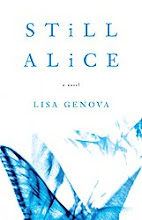Inspired by the stories of Oliver Sacks and a curiosity for understanding how the brain works to affect behavior and reveal who we are, I entered the graduate program in Neuroscience at Harvard in 1994. I quickly became interested in the mechanisms underlying addiction, how the same drug administered chronically could hijack our natural reinforcement systems and dissociate wanting from liking. My lab bench was just down the hall from Rudy Tanzi and others who were working to crack the genetic code for Alzheimer’s. I graduated with a Ph.D. in the spring of 1998 with a keen interest in the Alzheimer’s research being conducted down the hall, but I wouldn’t say I’d been directly touched by Alzheimer’s Disease yet. That came next.
Looking back, my eighty-five-year-old, widowed grandmother had been showing signs of dementia for years. But she was a smart and active woman, and she navigated around her symptoms with great skill for some time. And her nine children, their spouses, and her grandchildren were all content to look the other way or to pass off her cognitive mistakes to normal aging.
Then we got the phone call. She’d walked to the bowling alley at four in the morning, insisting it was middle of the day and wondering why no one was there. It was quite literally the wake-up call that forced my family to look directly at her and what was going on.
Her daughter, my Aunt Mary, moved into her house (along with my Uncle Barry) and began working from there. Her other daughters, my mother, and, less often, I came over to help out. With nothing we could actually do to alter the course of her disease, like spectators we all watched Alzheimer’s systematically disassemble the woman that was my grandmother. Ironically and almost immediately, she forgot who my Aunt Mary was. When we told her that she was her daughter, Mary, I was struck by how she never believed us and that this didn’t ruffle her. Before Alzheimer’s, if you’d told my grandmother that someone was her child who she believed wasn’t, she most certainly would’ve argued with you or laughed at you or both.
She was losing herself. I watched her studying her own face in the mirror, not comprehending the old woman’s face she saw. She didn’t know her last name, the time of day, to remember to go to the bathroom when she needed to, who her children were, who I was.
But although she lost her history and couldn’t understand who we were or why we were there (she told people my Aunt Mary was a homeless woman who’d wandered in to live with her), there were parts of my grandmother that never left her. As she always had, she loved lively company. We’re a loud, Italian family. She delighted in having us there, sitting around her kitchen table, eating, laughing to tears, telling stories. And she remained good-natured and good-humored, always willing to participate. Here’s one of my favorite exchanges—
Aunt Mary: Come on, Ma, we’re going to the movies.
Nana: Okay, I don’t know who you are, but I’m coming!
The reasons why her family loved her, the reasons why we are connected, disappeared for her, but they didn’t for us. We continued to love her, and she accepted it. She understood our hugs and kisses and smiles and returned them with great enthusiasm. I know she felt included and loved to the moment she died. I know this is my Aunt Mary’s proudest achievement in life.
So I have a background in Neuroscience and a grandmother who had Alzheimer’s Disease. I’m on the road to here but not quite here yet. There were a couple of additional avenues I needed to travel first.
As I visited with my grandmother, the neuroscientist in me became fascinated with her progressive dissociation from her concept of self. I wondered what it must feel like, when those parts of the brain that inform awareness and identity become increasingly inaccessible, and I’d wished I’d thought to ask her more when she had the communication skills to describe it to me. A lover of learning and knowledge, she would’ve readily considered my questions. What is having Alzheimer’s Disease like from the point of view of the person with Alzheimer’s? This question was the seed of the novel I would write.
I needed to meet people with Alzheimer’s in the early stages, people who could still describe what it’s like to have dementia. I found them at www.dasninternational.org, an online community of intelligent, articulate, and passionate people in their forties, fifties, and sixties with dementia who support each other and advocate for better care and a cure. They bravely shared their most vulnerable experiences, helping me to create a fictional story about a young woman with Alzheimer’s that is in every way possible faithful and respectful to what having Alzheimer’s is actually like. To these amazing friends of mine, I owe my deepest gratitude and admiration.
When I began the book, I thought I was writing a story as a neuroscientist in honor of my grandmother and family. And I thought that when I finished, I’d quickly move on to other endeavors. But in the course of writing the book, my eyes were opened to more than I’d expected. I see what people with Alzheimer’s and their loved ones struggle through, emotionally, physically, and financially. I see how difficult getting a proper diagnosis can be. I see how ignored and outcast people with Alzheimer’s become. I see how close we could be to a treatment that can stop this disease in its tracks. Seeing what I see, I knew I’d be sticking around.
I’m a neuroscientist, granddaughter, friend, and author. And I’m here. How did you get here?
Lisa Genova, author of STILL ALICE, www.StillAlice.com

